DARPA Rascal Project - US Air Force Air Launch
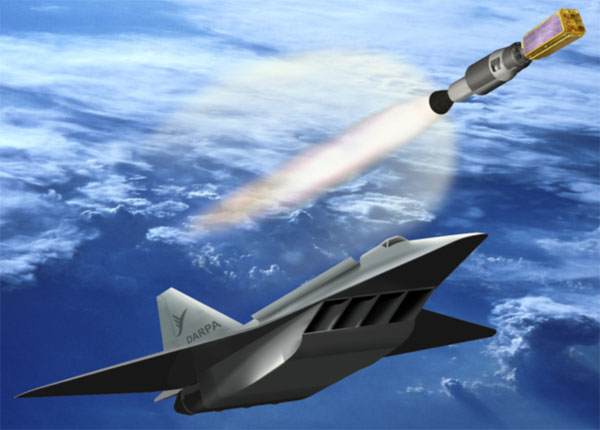
In 2001, the US Air Force issued an MNS application * ( hereinafter the terms and abbreviations, the decoding of which is given at the end of the article ) are marked out with requirements for the “Operationally Adaptive Space Launch System” (ORS *).
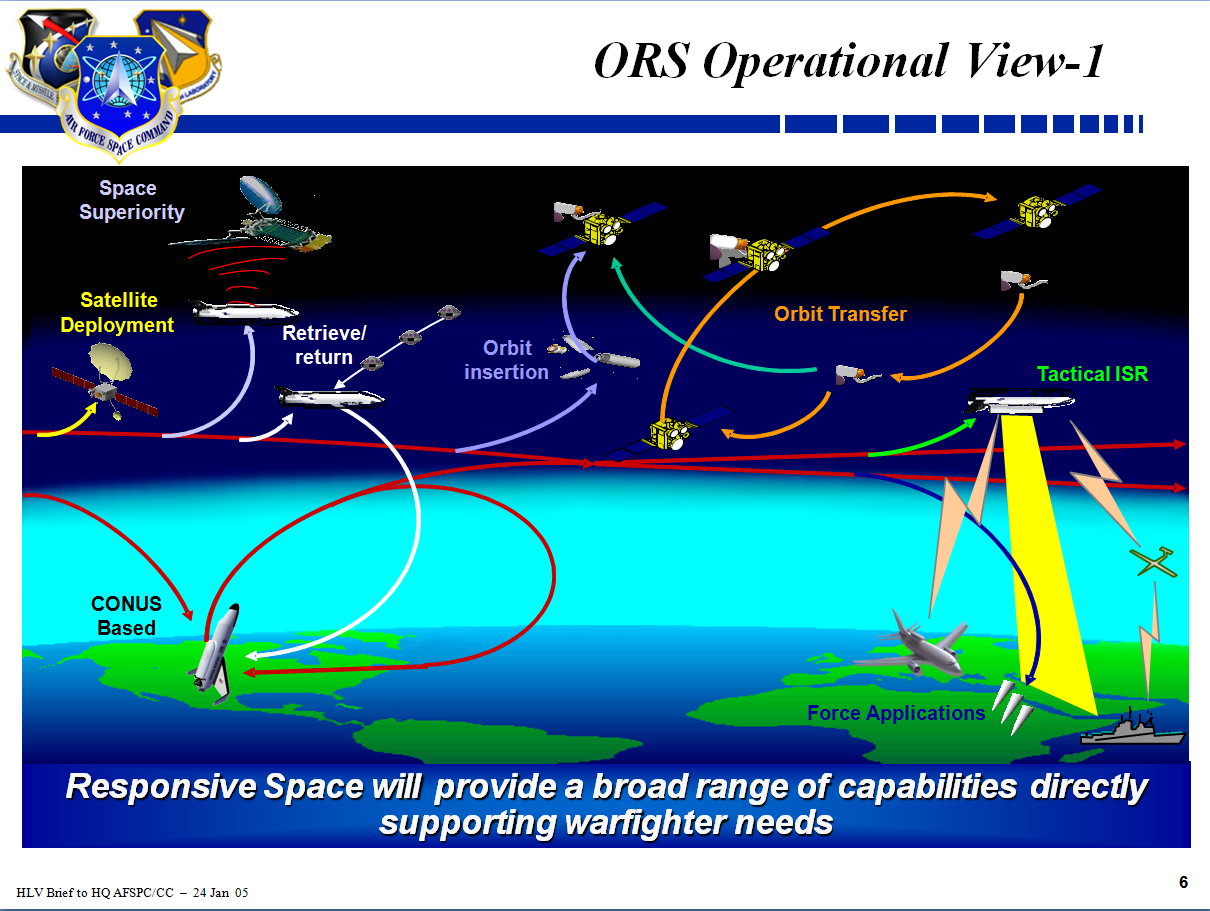
The MNS requirements included the following basic tasks:
- fast response time of the mission (launch);
- the possibility of launching (launching spacecraft *) from any latitude of the territory of the United States and its allies;
- accessibility (cost of withdrawal of 1 kg of CU * per LEO *) both on the basis of each mission and the total low cost of the program (R & D).
')
In response to the MNS, as well as taking into account the estimated commercial needs of the space launch market, several concepts were proposed that meet these requirements.


The most realistic was a project based on the principle of "air" start. Rascal-Responsive Access Small Cargo Affordable Launch.
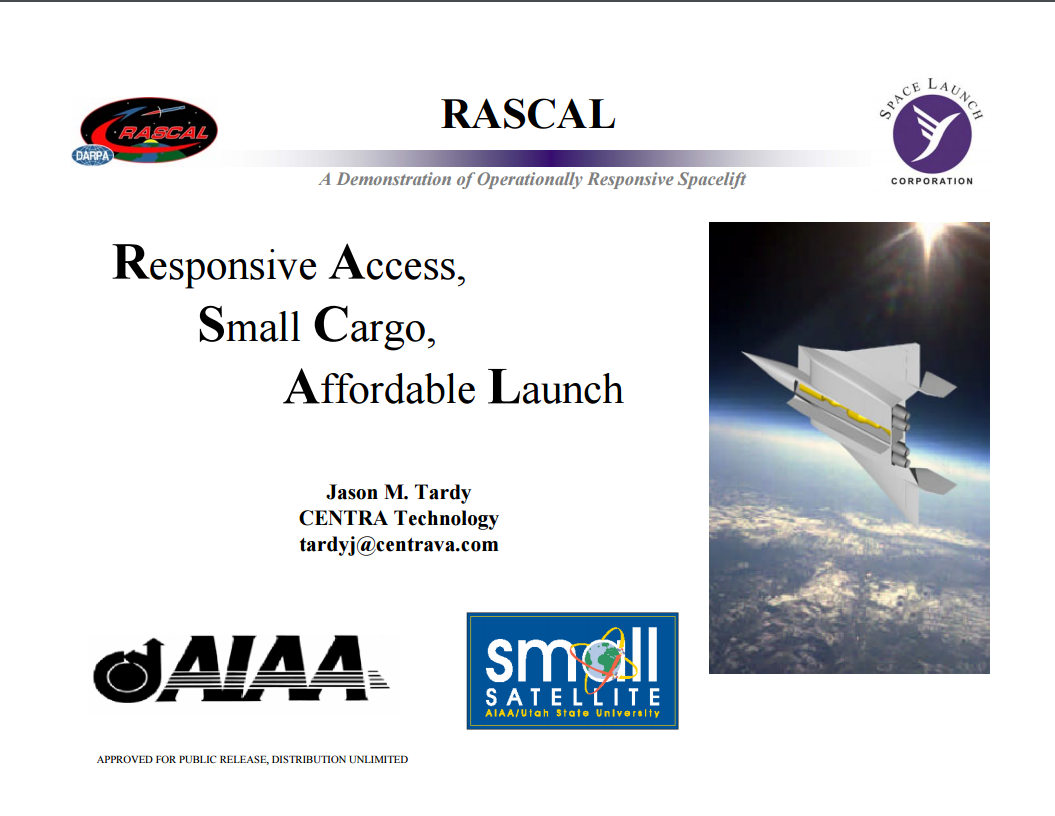
Air Launch (BC) - a method of launching rockets or airplanes from a height of several kilometers, to which the launch vehicle is delivered. The means of delivery is most often served by another aircraft, but a balloon or an airship can also act.
The main advantages of the aircraft:
- As a rule, this system (or part of it) is reusable with a low cost of MU * output to LEO. This is due to the fact that the technically most difficult first stage is the most expensive;
- It uses the fact that the "freebie" is given to us by the universe, and specifically the atmosphere. Rather, the properties of the atmosphere when physical bodies move or are in it: lift force and / or Archimedean force, i.e. those factors that for conventional vertical launch launch vehicles are a hindrance;
- The aircraft system is not tied to the launch complex (SC) or the launch position (SP), roughly speaking to the expensive cosmodrome with all the infrastructure. And accordingly, there is no reference to the launching latitude (a headache for the USSR and now for Russia).
In fact, any runways, both military and civilian, of the required category can be used;

- Logistics (all elements, including aircraft and carrier-aero-transportable), fuel components - the usual fuel components for aircraft of our time;
- Efficiency;
- The cheapness of the components of the system and the established commercial production;
- Ecological aspect (exclusion zones under falling stages of PH);
etc.
There are disadvantages:
- The small mass of the displayed MON and restrictions on the size of the spacecraft;
- Practically (due to the mass and size limitations of the carrier), only NOO or higher orbits are achievable, with a significant decrease in the mass of the PN;
- The complexity of both calculations and the performance of the carrier, capable of withstanding about - and hypersonic speeds (heating, thermal protection, aerodynamics, etc.)
- Constantly transportable ballast (fuel supply for return and landing of the first stage);
- Other
Launched in March 2002, the RASCAL project is an attempt, with the support and under the auspices of TAR * DARPA, of developing a partially reusable air-launched space launch system capable of delivering payloads to NOUs quickly and regularly at a very economical price.
Phase II - the 18-month program development phase began in March 2003 with the choice of the SLC space rocket corporation (Irwin, California) as the general contractor and system integrator.

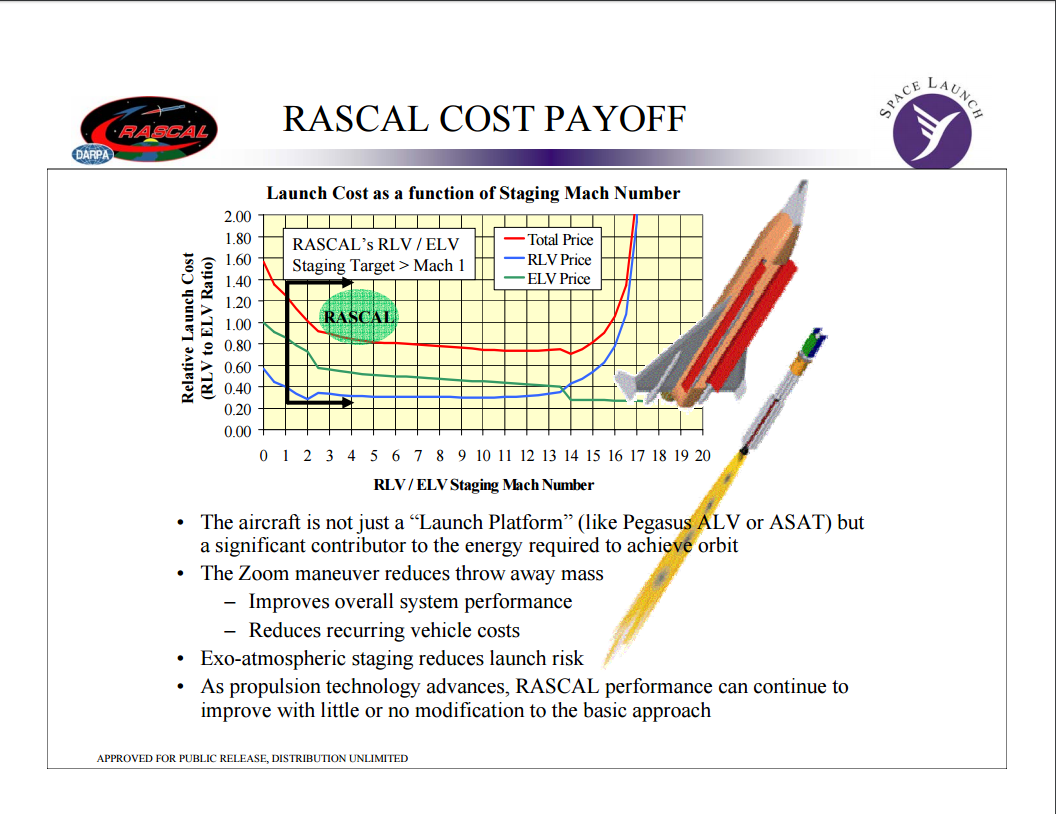
RASCAL relies on the air-based Spacelift (VCS *) architecture, consisting of a reusable aircraft
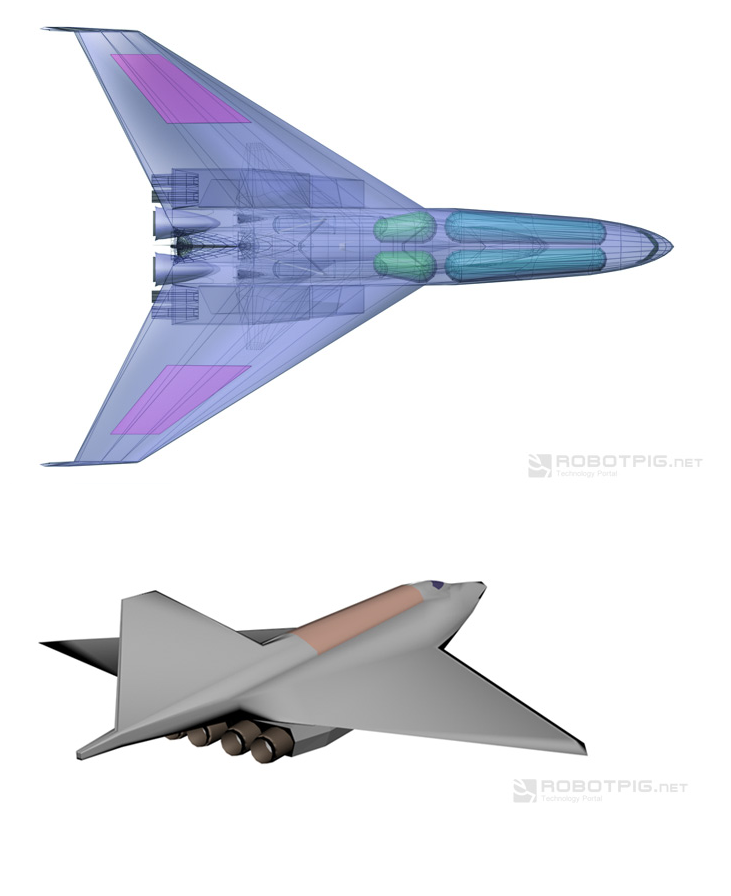
And a single-use rocket (upper stage) (ELV *), which in this case is called ERV *.
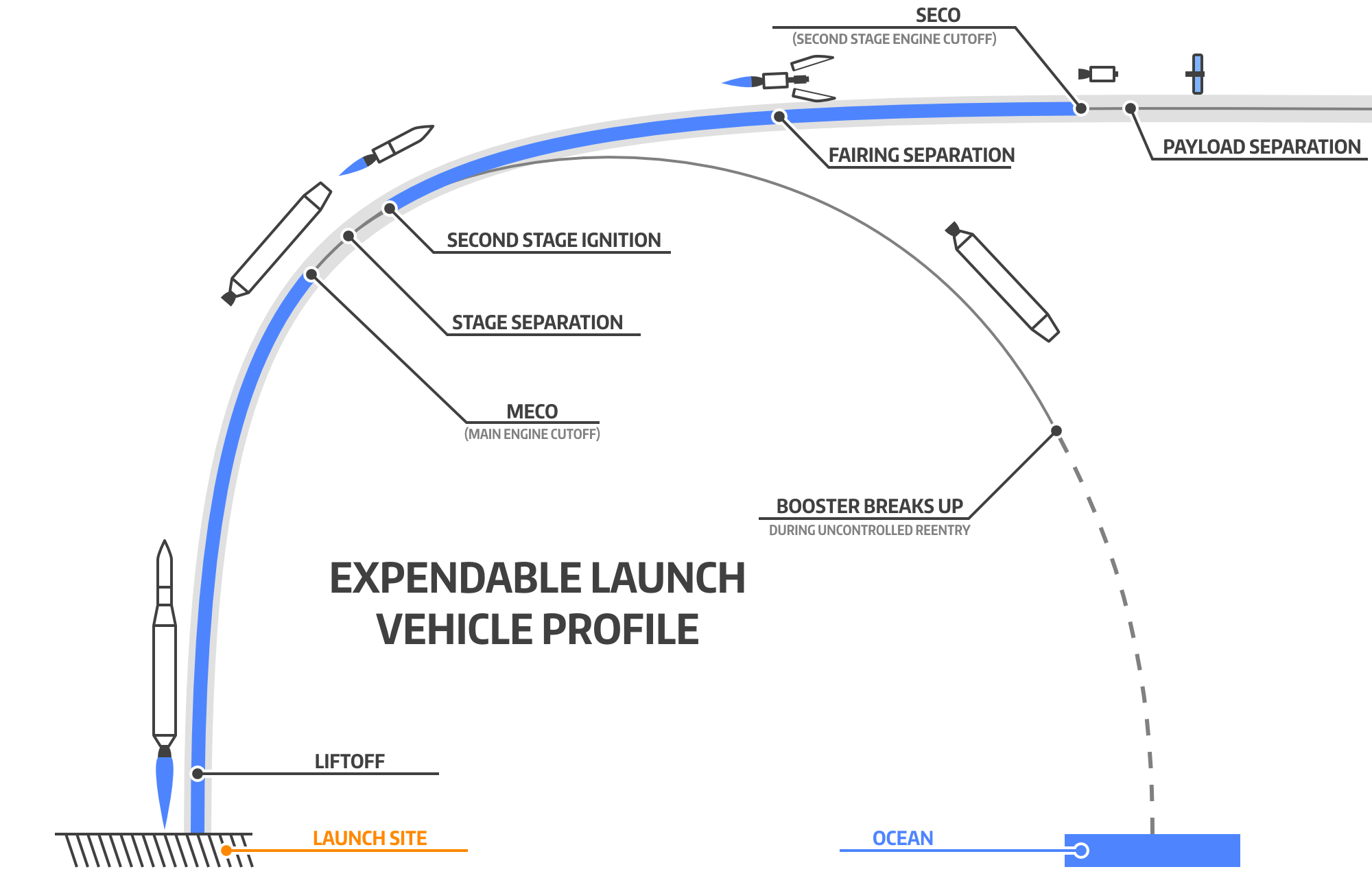
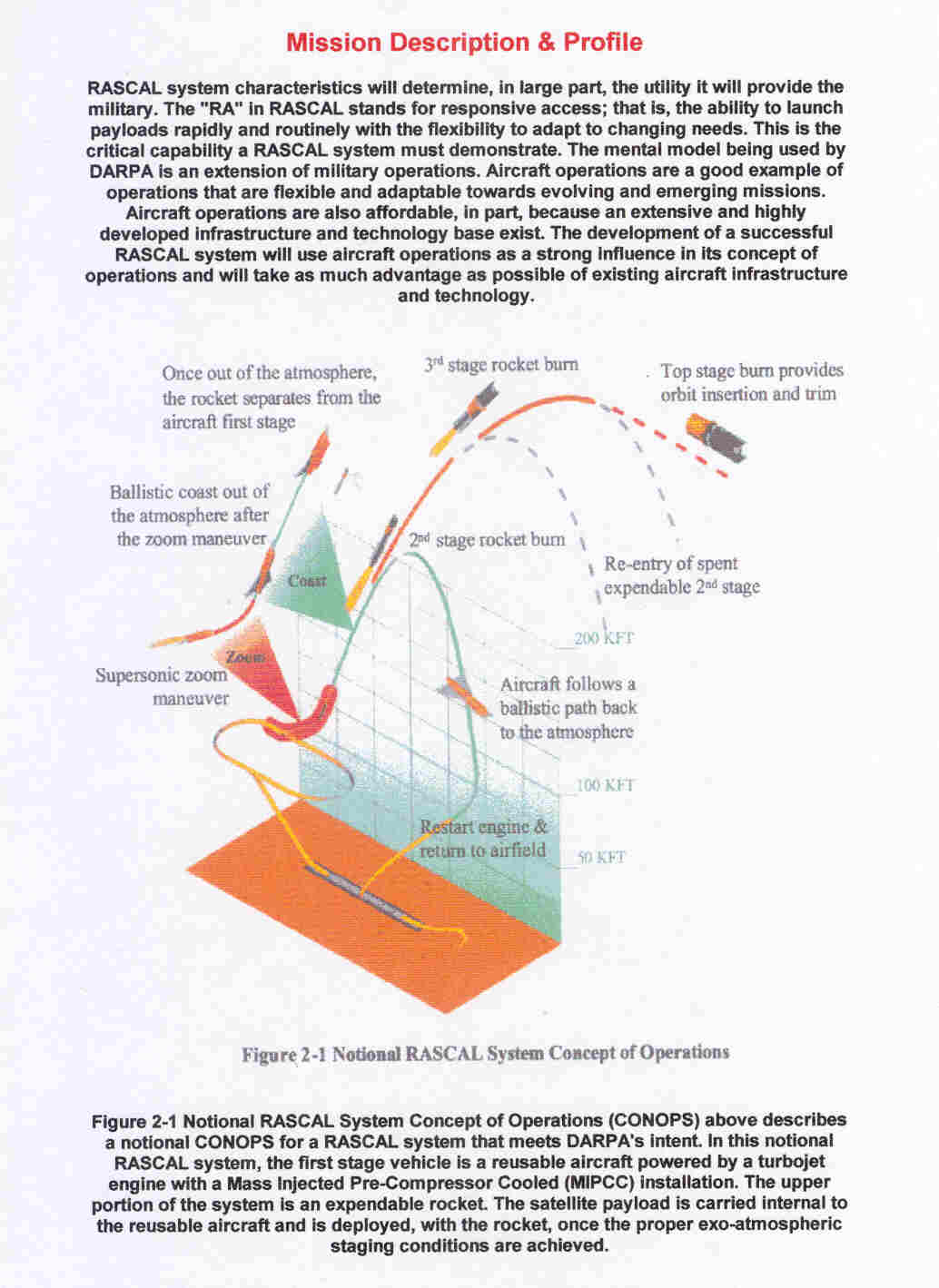
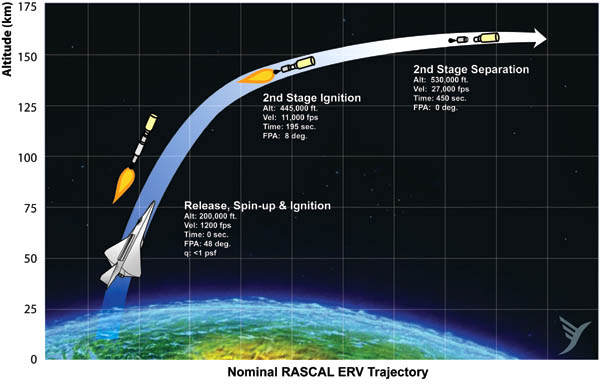
Turbojet engines of a reusable vehicle are made in a forced version, known since the 50s as MIPCC *.
MIPCC technology is perfect for achieving high Mach numbers when flying in the atmosphere.
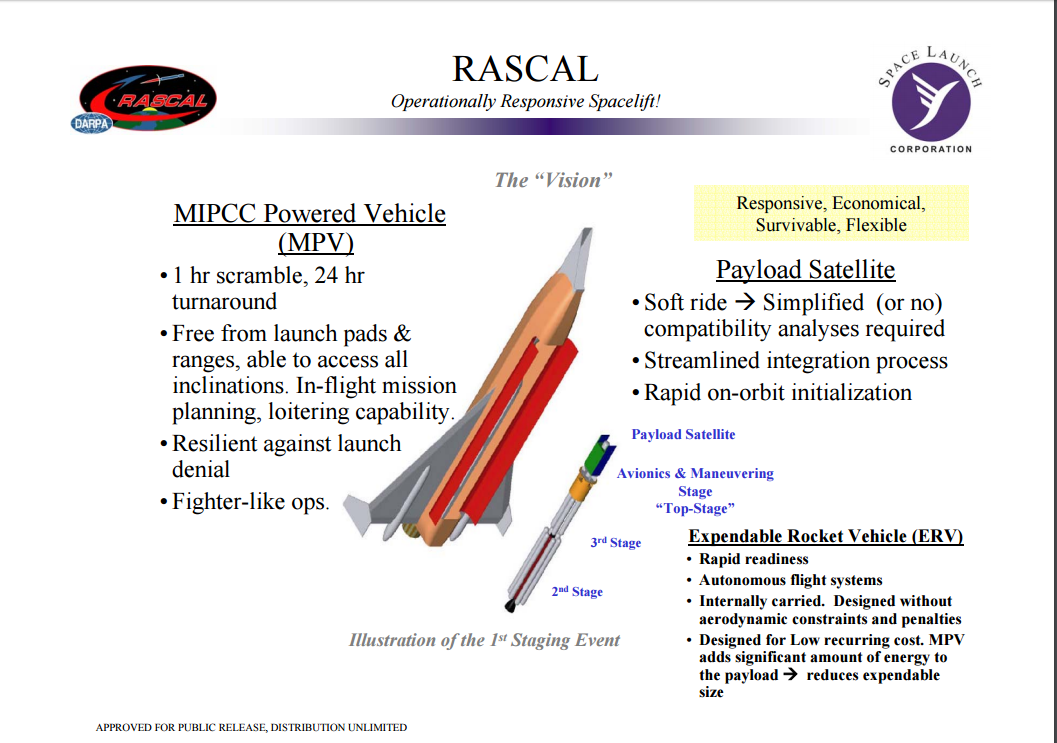
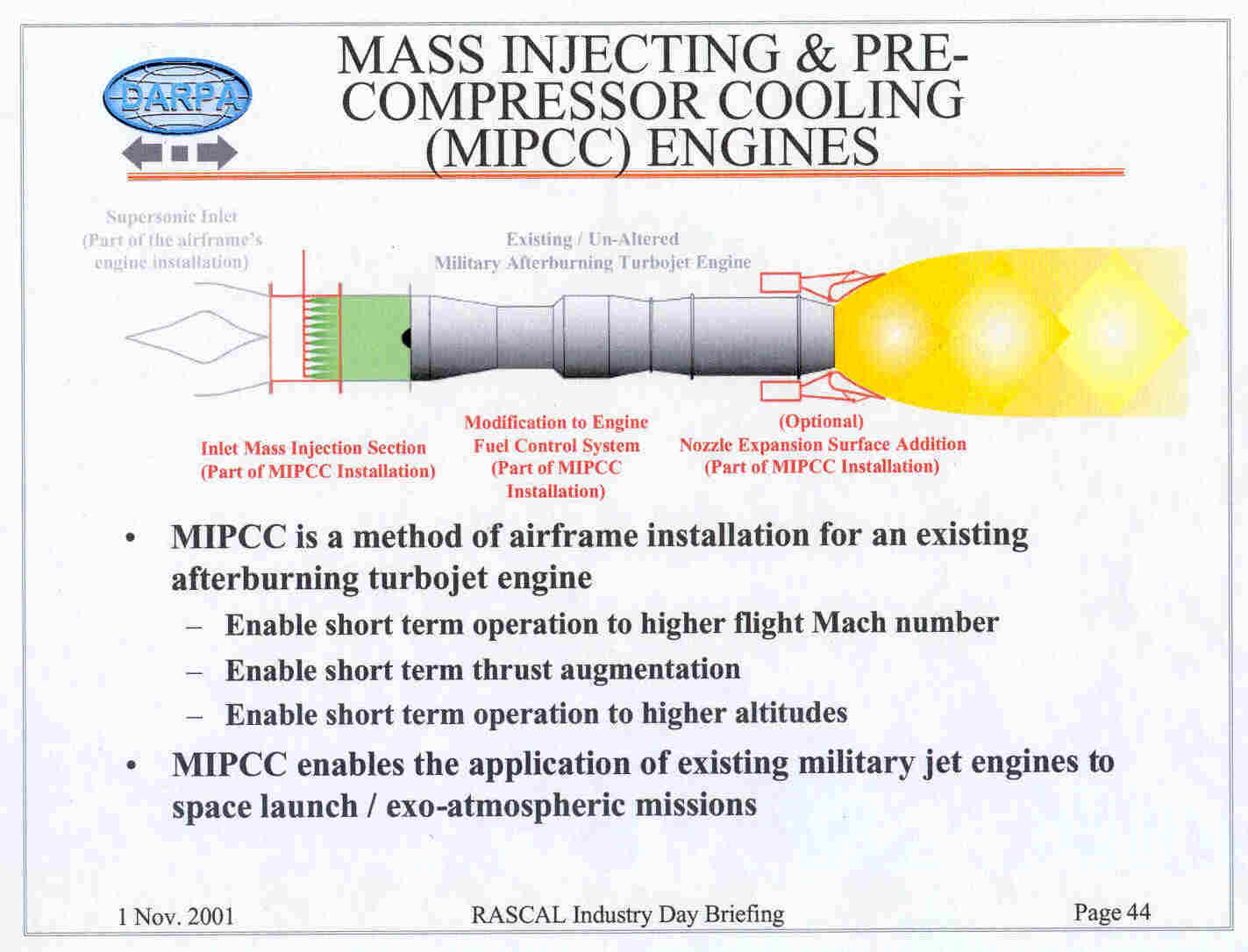
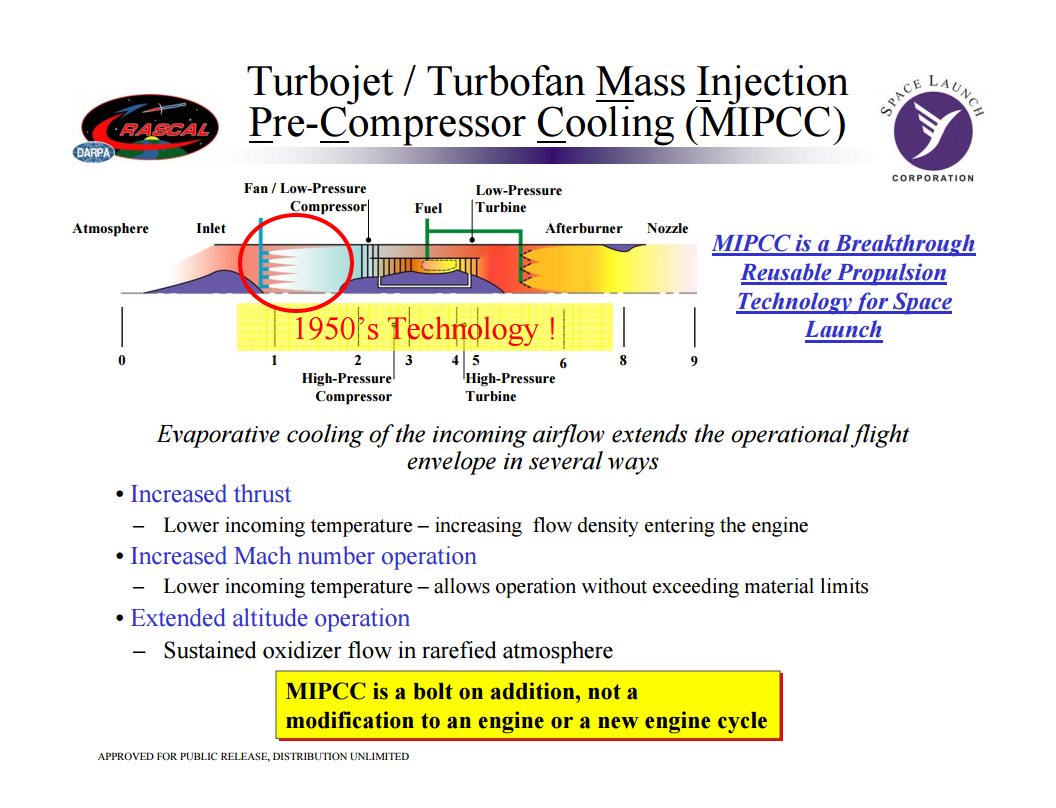
After reaching near hypersonic speeds (or hypersonic speeds with M> 5) in horizontal flight, the carrier makes an aerodynamic maneuver of the “dynamic slide” type (Zoom Maneuver) and performs an exo-atmospheric (from altitudes over 50 km) launch of a disposable rocket (accelerating stage).


The high power capacity of the turbofan engine with MIPCC technology not only allows for a simplified two-stage ERV design, but also significantly reduces the structural requirements for ERV, which with this output profile does not experience any significant aerodynamic loads.
The subsequent cost start-up is projected to be below $ 750,000 for the delivery of 75 kg of payload to the LEO.

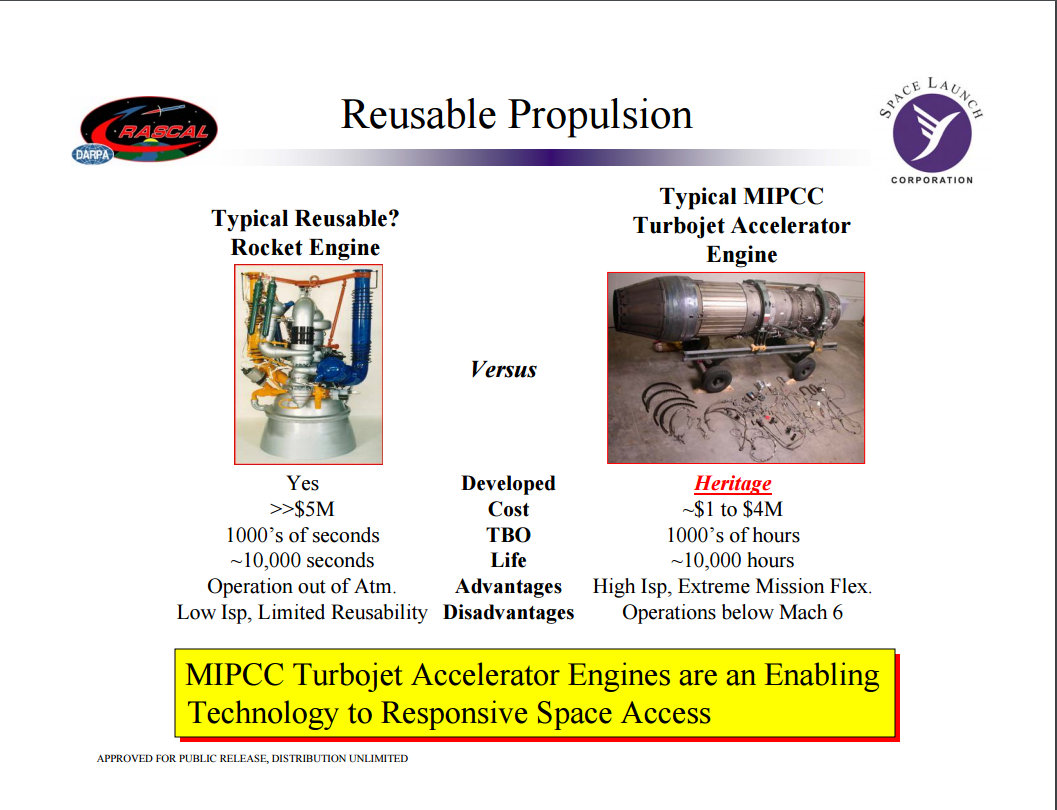
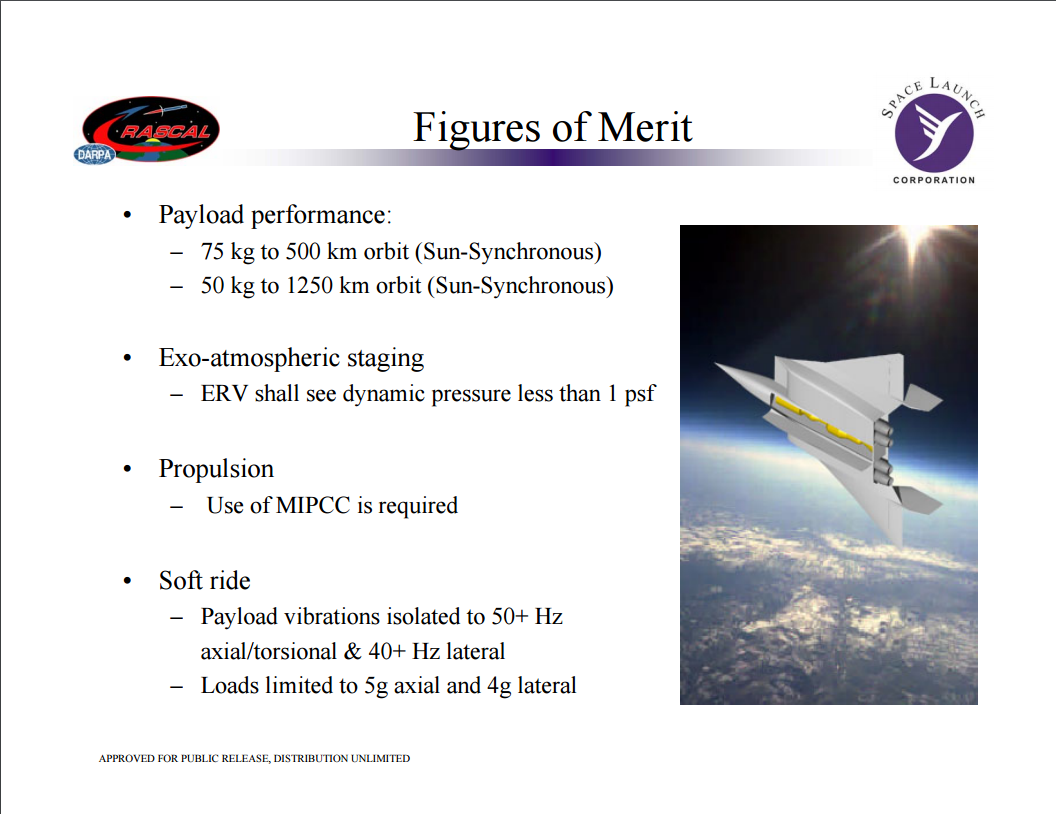
The RASCAL architecture also supports a run cycle between missions of less than 24 hours.
In the future, it is intended to use the variant with a reusable second stage system.

In 2002, the president of Destiny Aerospace, Mr. Tony Materna, inspired by the money and prospects of DARPA, set about trying to use the existing and retired American single-engine, single-engine, supersonic delta-wing Convair F-106 Delta Dart fighter for this system.
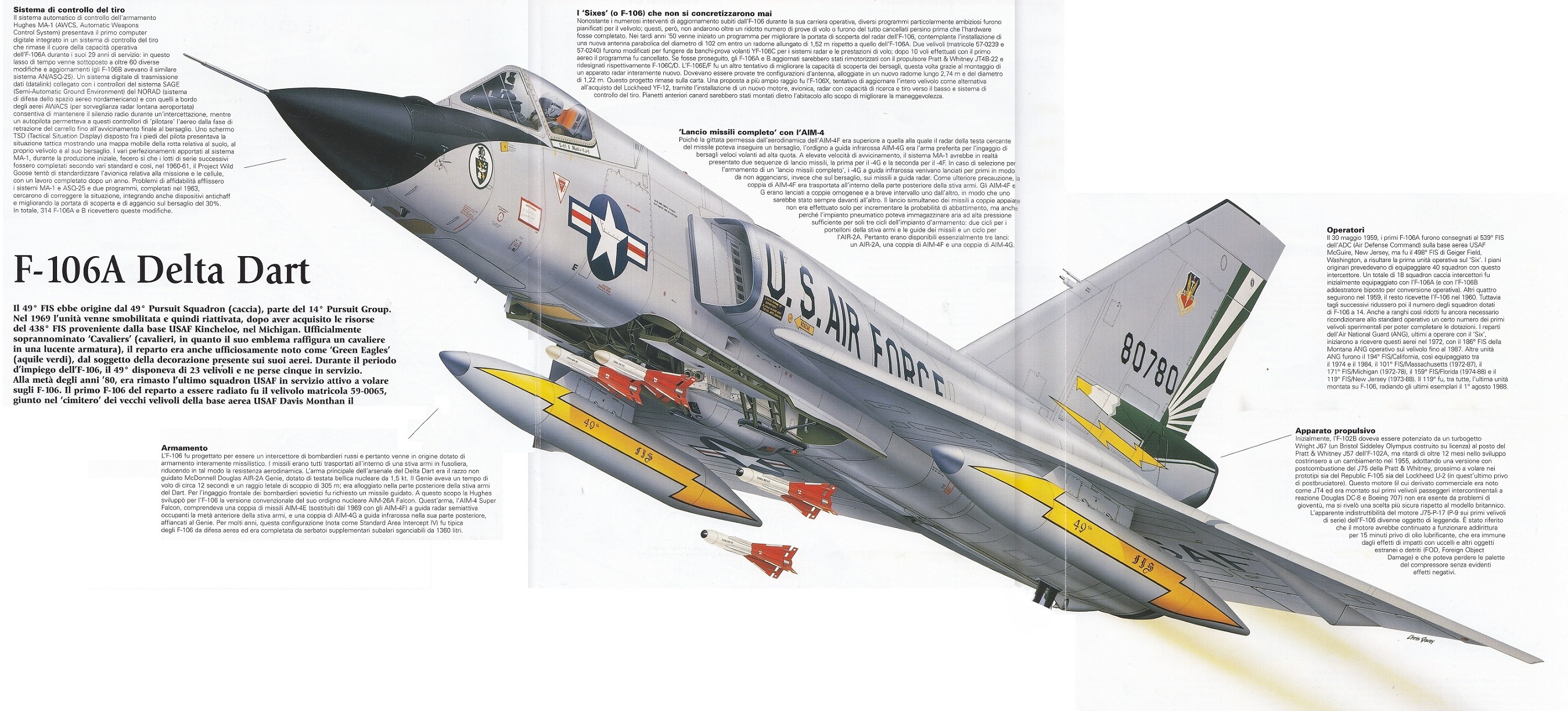

In fact, on the modification of the Convair F-106B in the 60s, the MIPCC technology was already tested and applied. If I am not mistaken, it was developed on it.

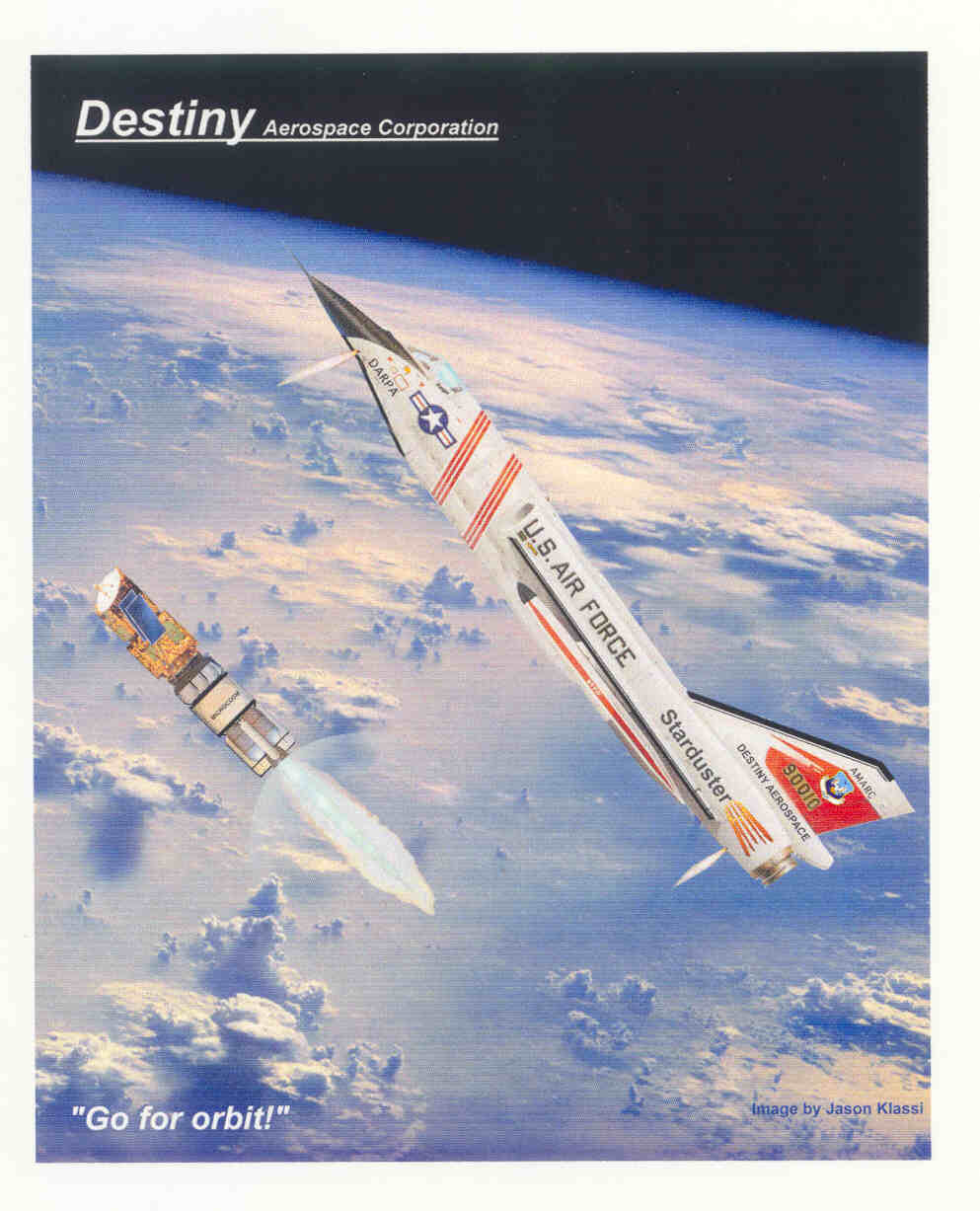
It is a pity that the cheap and quickly implemented RASCAL project based on the F-106 did not get off the ground after nearly two years of research.
The small fleet of the seven remaining flyable F-106s available at Davis Monthan AFB AZ was first reduced to 4 units (three F-106s were donated to museum expositions at Castle CA, Hill AFB, UT & Edwards AFB, CA), and Tony Matern did not wait for interest and investment.
→ Read the Final Draft of that proposal
Note. A development project similar in principle and with similar parameters is being carried out in Russia at OAO NPO Molniya on the subject of research and development work Molot. Details can be read here and here .
Terms and abbreviations marked "*"
MNS - Mission Need Statement = Formal Requirement (application)
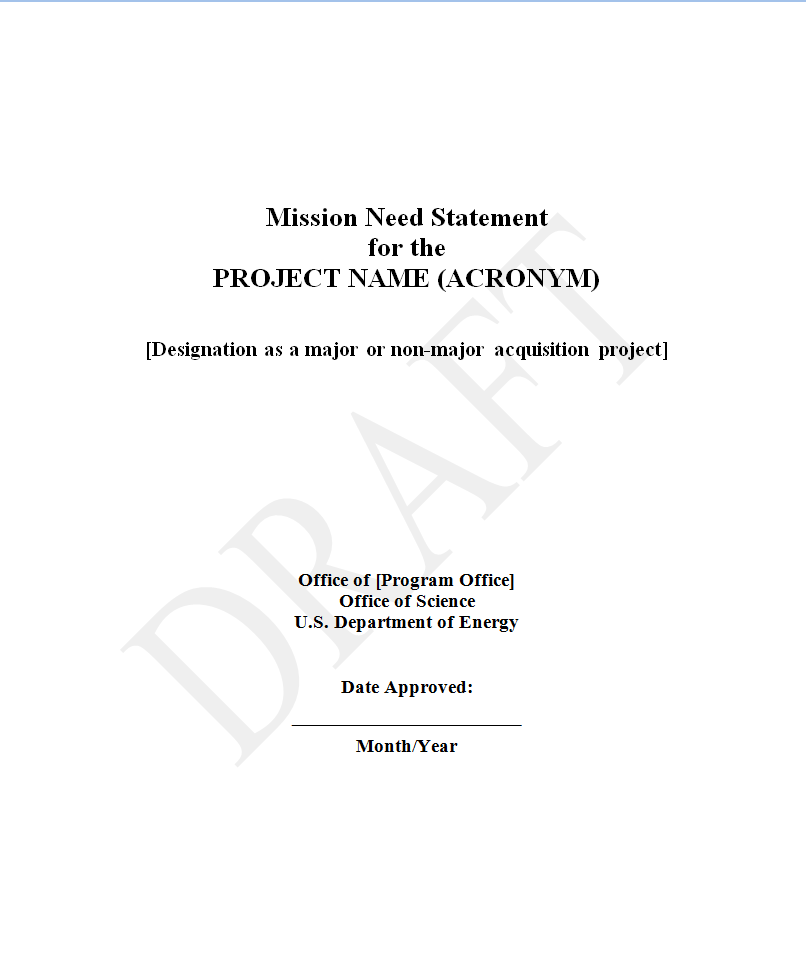
→ MNS
ORS - Operationally Responsive Spacelift = spacecraft launch system with quick response

Sun - air launch, VKS (air-space spacelift) = aerospace launch.
Rascal - Responsive Access Small Cargo Affordable Launch = An available air-based spacecraft launch system with fast response time.
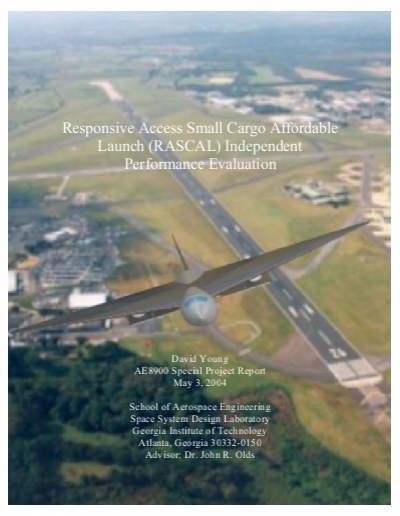
KA - spacecraft
LEO (NOE) - low earth orbit (Low Earth orbit)

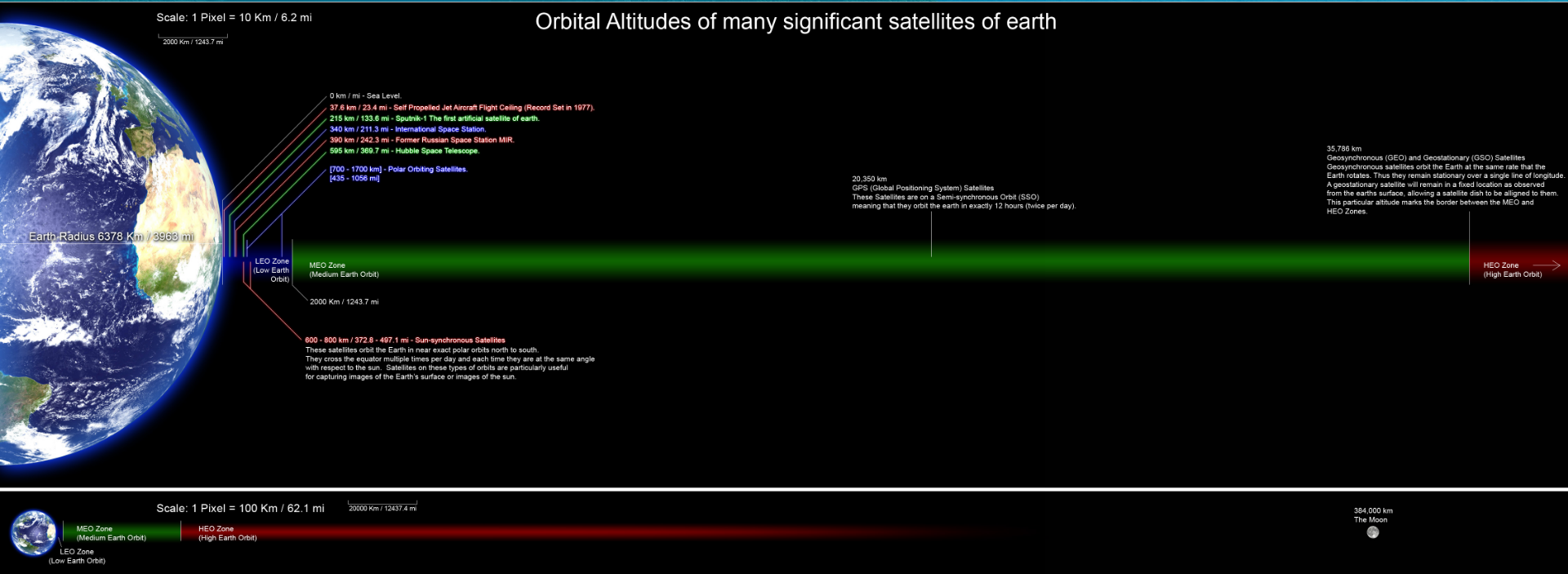
PN - payload
Runway - runway
ELV - expendable launch vehicle

→ ERV - Expendable Rocket Vehicle
MIPCC - Mass Injection Pre-Compressor Cooling = The technology is the spraying of water only in front of the blades of the J-75 engine compressor as soon as the plane approaches Mach 3.
This leads to the cooling of superheated air at the engine inlet, as if deceiving the engine, simulating its operation on a lower Mach number.
Water injection also increases the density of the flow through the engine, as well as its volume (second consumption). Result-TRD gives the more thrust, the faster the aircraft moves.
The increase in thrust is theoretically possible at 100%, 200% and 300%, depending on the amount of water injected.
This method also allows the TR-J-75 to operate at much higher altitudes than its design estimates.
→ TTO - Tactical Technology Office
Used documents, photos and videos:
www.nasa.gov
www.yumpu.com
en.wikipedia.org
www.faa.gov
www.space.com
www.darpa.mil
robotpig.net
www.456fis.org
www.f-106deltadart.com
www.aerosem.caltech.edu

→ MNS
ORS - Operationally Responsive Spacelift = spacecraft launch system with quick response

Sun - air launch, VKS (air-space spacelift) = aerospace launch.
Rascal - Responsive Access Small Cargo Affordable Launch = An available air-based spacecraft launch system with fast response time.

KA - spacecraft
LEO (NOE) - low earth orbit (Low Earth orbit)

PN - payload
Runway - runway
ELV - expendable launch vehicle

→ ERV - Expendable Rocket Vehicle
MIPCC - Mass Injection Pre-Compressor Cooling = The technology is the spraying of water only in front of the blades of the J-75 engine compressor as soon as the plane approaches Mach 3.
This leads to the cooling of superheated air at the engine inlet, as if deceiving the engine, simulating its operation on a lower Mach number.
Water injection also increases the density of the flow through the engine, as well as its volume (second consumption). Result-TRD gives the more thrust, the faster the aircraft moves.
The increase in thrust is theoretically possible at 100%, 200% and 300%, depending on the amount of water injected.
This method also allows the TR-J-75 to operate at much higher altitudes than its design estimates.
→ TTO - Tactical Technology Office
Used documents, photos and videos:
www.nasa.gov
www.yumpu.com
en.wikipedia.org
www.faa.gov
www.space.com
www.darpa.mil
robotpig.net
www.456fis.org
www.f-106deltadart.com
www.aerosem.caltech.edu
Source: https://habr.com/ru/post/401245/
All Articles